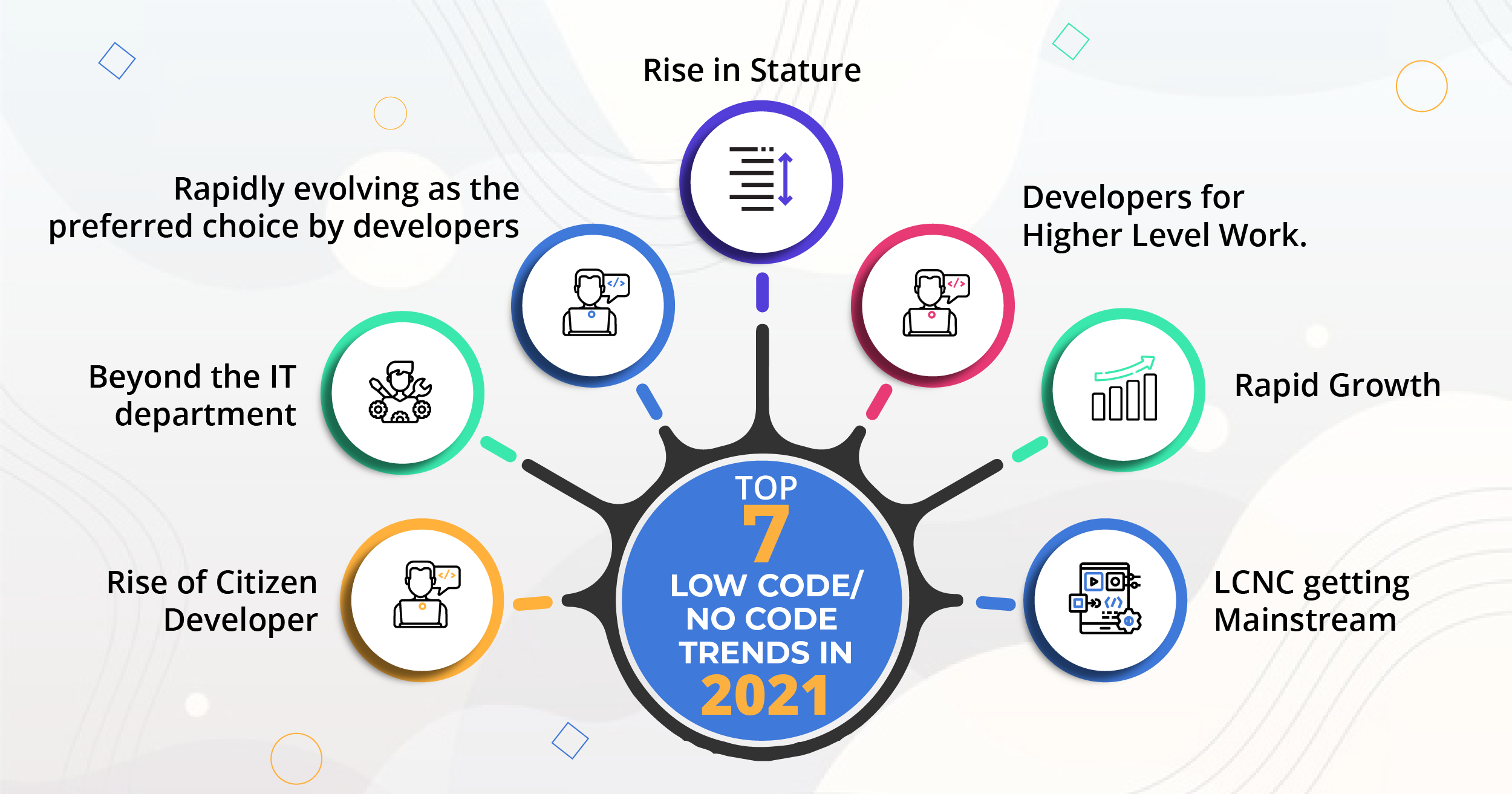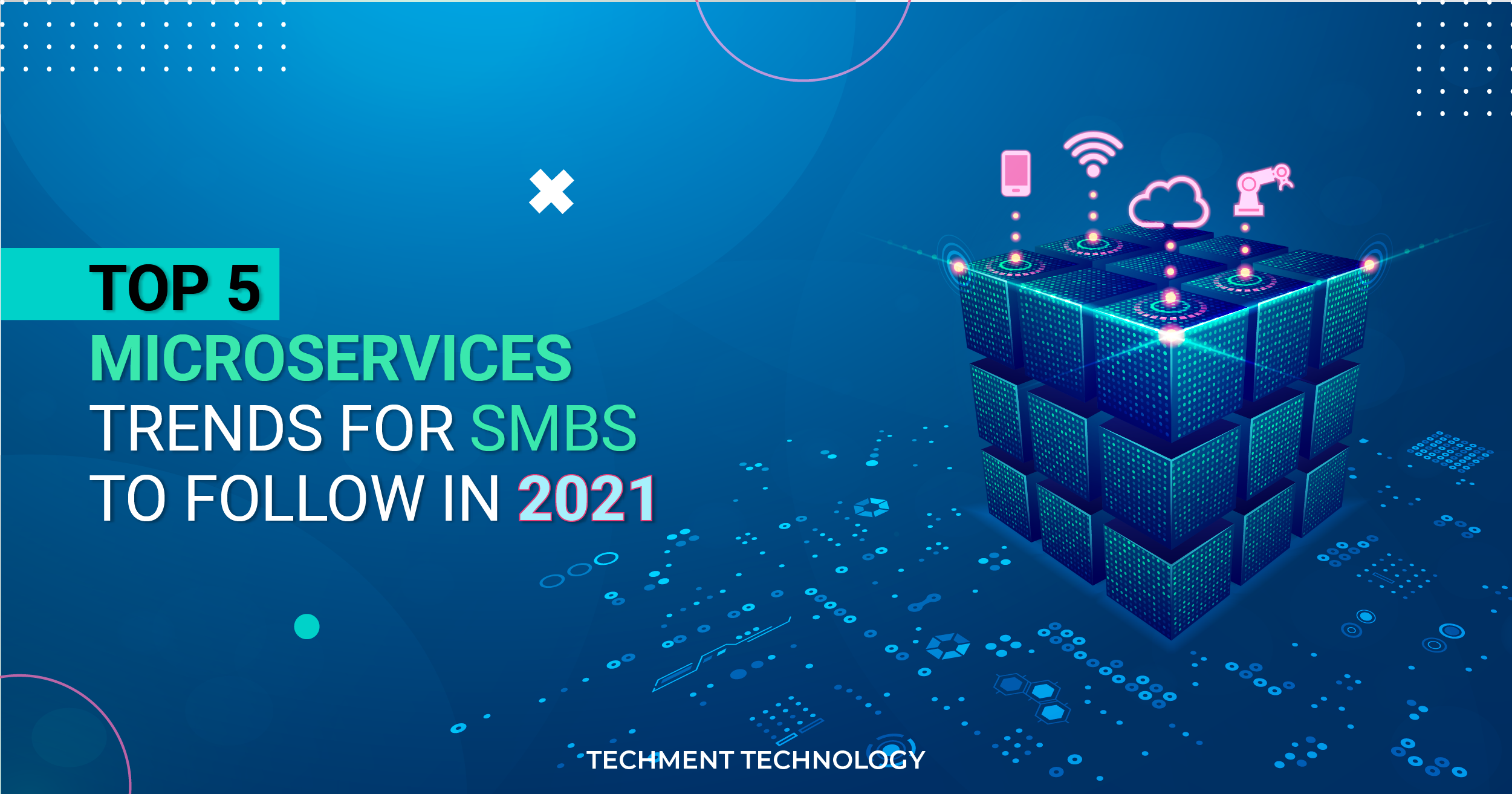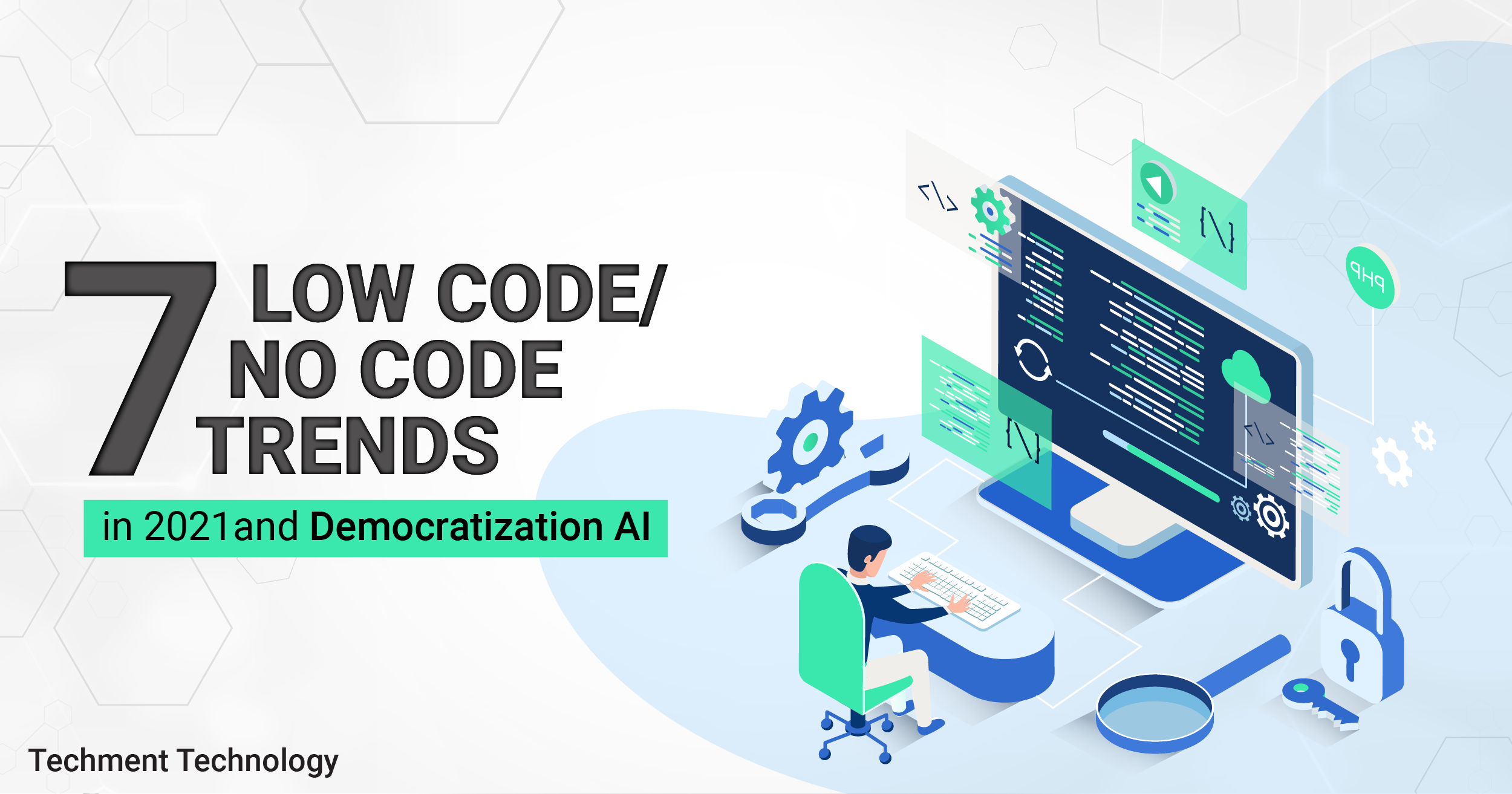With every radical breakthrough, we feel we have reached the zenith of innovation, only to be surprised by human genius. Cloud changed our world in unimaginable ways, and it has kept on changing, now even faster with low code/ no code architecture. Corporations like Microsoft have admitted that in the future, organizations will develop software in-house. Today, most big names have a low code offering for customers.
Unnerved by the pandemic, COXs are gazing into the crystal ball, and one thing is emerging clearly- the need to invest in digital transformation and strategize for digitizing offerings to better the customer experience. The rise of low code and digitization are mutually reinforcing trends.
In our previous blog Low Code/No Code – A Revolution is Brewing, we have gone in great detail explaining the nuances of Low Code/No Code (LCNC) and in the article we are explaining the trends.
At the heart of the digital transformation is software, but the software is in itself changing; here are the three ways it has changed:
- Software Now Powers Everything: Many would not be happy if you call Tesla an automotive company. Peloton, Amazon, and Chipotle are a few examples where the software is at the heart of the business and is integral to CX.
- Warp Speed of Development: The expectation of years or months for the next version has decimated to weeks or days with the agile methodology of development.
- Shrinking Cost of Development: Cost has shrunk dramatically with innovations in the cloud, microservices, serverless and more. Today, software can be deployed in minutes from anywhere in the world.
- From Software Development to Assembly: Today we are seeing the rise of a new class of software ‘assemblers’ emerging from the hoi polloi of software ‘developers’. They can create new software capabilities with minimum to no coding training, and this is because of low code/no code developments.
How Low code/ No code Works
Abstraction refers to making possible the assembly of low-level code as opposed to being written from scratch, just like Lego blocks which are connected in artful ways instead of fabricating the blocks each time a new structure is to be made. No code enabled automation layer gives a great thrust to the speed of software development by as much as mind-numbing 100-times.
100 times Faster Software Development with Abstraction.
Resilience and Flawless Functioning:
Low Code/ No Code platforms operate on the leading architectures, and they provide it with autoscaling resilience containerization. Kubernetes, Docker, Linux along with standard cloud platforms AWS and Microsoft Azure facilitate the functioning of LCNC, just like any other enterprise application.
Prominent examples of no code / low code platform companies are OutSystems, Unqork, AirTable, Mendix, and Quickbase. Their growth has been phenomenal in recent years.
Making Exceptional Low-code
When developing class-apart, low-code offerings, ensure that it provides all-in-one capabilities by leveraging founding principles of low code:
- Abstraction
- Automation
- Siloless connectivity with adjacent technologies and services
- Horizontally expansive technology stack
- Easy Integration with drag-and-drop functionality for data integration, data insights, AI, and more
Top 7 Low Code/No Code Trends in 2021
With time, development cycles have come down dramatically. Today, software are measured for ‘low-codiness’ as it is in the interest of everyone. This wave of disruption is big and will change software development from its foundation.
Here are the major trends that reveal the nature and magnitude of change underway:
Low Code/ No Code’s Big Leap With AI
Today, LCNC platforms already deploy AI bots for test automation and validating software code. Thus, making available developers for addressing the needs of key areas.
Everyone Wants a Slice of Low-code Pie
From Oracle to SAP, today, every company has a low-code offering. The mushrooming of low-code offerings is a trend that is only going to pick pace in coming years. Forrester names Microsoft PowerApps a leader in low-code development platforms. So, every major company recognizes the significance and rise of low code, the trend is here to stay.
Reimagining Development with Low Code
The whole application life cycle should be rethought so every part of the CI/CD interaction profits by visual modeling and AI. Furthermore, efforts are being put to enhance the abilities of these platforms to offer a similar degree of expressiveness as traditional coding.
Forrester and Gartner’s analysts estimate 75% of all enterprise software will be built with low-code technology this coming year 2021. Some analysts (and most vendors) suggest that some low-code customer application deployments are possible ‘within days’ and – in some cases – it’s even a question of development overnight on a next-day-basis.
In terms of revenue, Forrester says the low-code market will top $21 billion in spending by 2022. That’s a huge number–and opportunity.

- Rise in Stature. Over 2/3rd of IT, developers believe that LCNC is viable for the development of mission-critical applications.
- Developers for Higher Level Work. 80% believe LCNC helps deploy developers for higher-level work, and the trend is picking pace.
- Rapid Growth – Astounding CAGR of 41%. Market to grow from $1.7 billion to $21 billion by 2022. (Forrester)
- LCNC getting Mainstream. LCNC will be responsible for 65% of all app development (Gartner)
- Rise of Citizen Developer. Over 3/4th of businesses assign high significance to citizen developers.
- Rapidly evolving as the preferred choice by developers. From 37% in 2019 to over 50% in 2020, developers are thinking about using low code. Also, IT departments of 69% of business are the reason for their venture into LCNC
- Beyond the IT department. Near 2/3rd of all custom, applications are built outside the IT department
Towards an Autonomous Software Creation
Pandemic, advancements in AI/ML, cloud, edge, and others have given more power to low code. Most companies are offering it, many are using it, and everyone is thinking about it.
The tectonics are shifting fast and in unimaginable ways. AI/ML with RPA and Low code have fueled discussions surrounding autonomous software creation, deployment, and management.
We are soon going to shift to overnight upgrades and weekly releases. The wave of digital transformation will also benefit for low code and vice versa. Start-ups or mature enterprises, both have many advantages of using low code – innovation, experimentation, faster delivery, and better customer experience. We are seeing history in making!
 All Posts
All Posts

